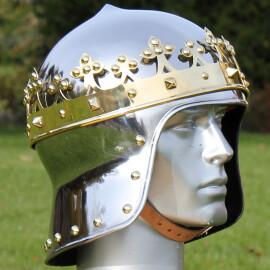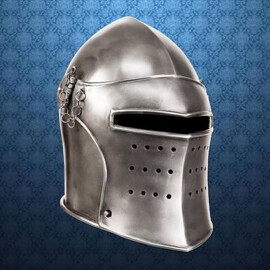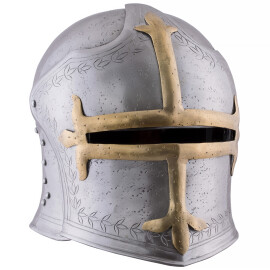Bascinets
The earliest versions of the bascinet, at the beginning of the 14th century, had no visors, and were worn underneath larger "great helms." After the initial clash of lances, the great helm was often discarded during fierce hand-to-hand combat, as it impeded breathing and vision. Thus, having a smaller helmet underneath was a real advantage.
Narrow your Results
Filter exactly what you are interested in.
11 items out of 58 found

How to determine a helmet size correctly
Please read the following information before you choose a size for an historic helmet. It is always unpleasant for both parties when the selected size does not fit on the first try and the helmet replica must be returned. This is especially true for…
Bascinet helmets
Over the course of the late 14th to early 15th centuries, the bascinet evolved from a shorter form with a shorter point (or no point at all) to its more pointed form—some so severe as to have a vertical back. In Germany a more bulbous version also appeared in the beginning of the 15th century. During the first half of the 15th century, more plates were added to protect the throat better, producing a form called the "great bascinet". Both the portion covering the skull and the hinged visor over the face became less angular and more rounded, until by the mid to late 15th century, the great bascinet had evolved into the armet.

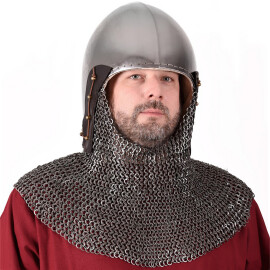
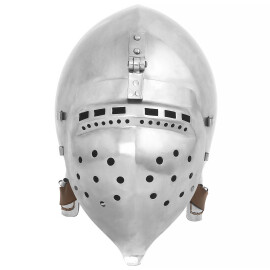
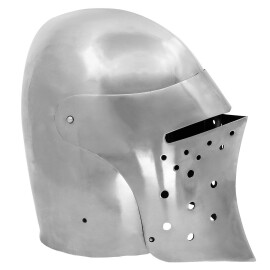
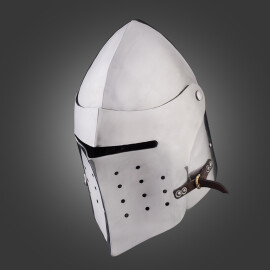
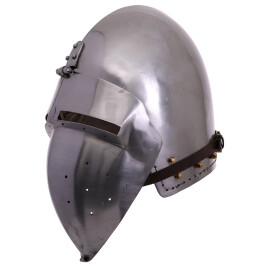
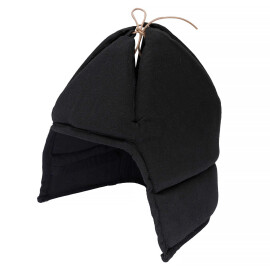
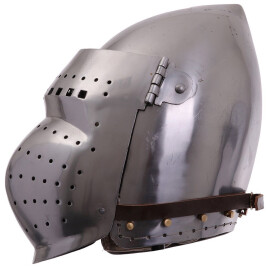
.3485832347.1706516066.JPG)
